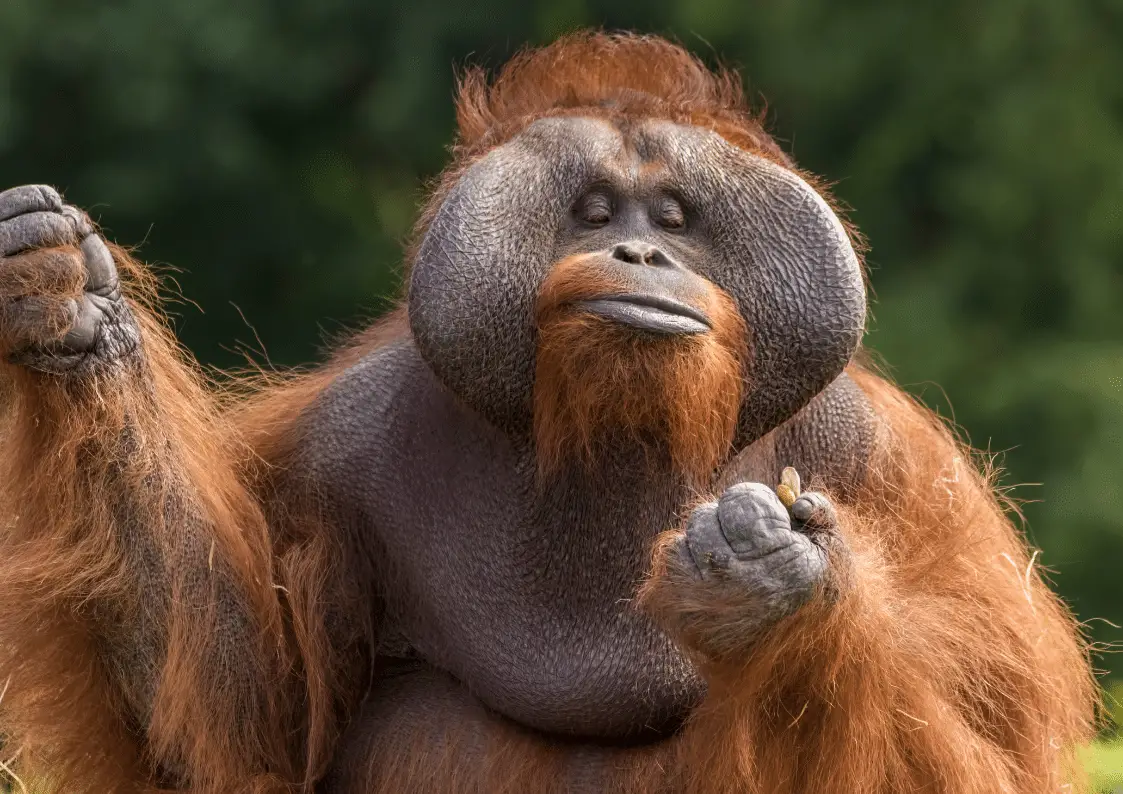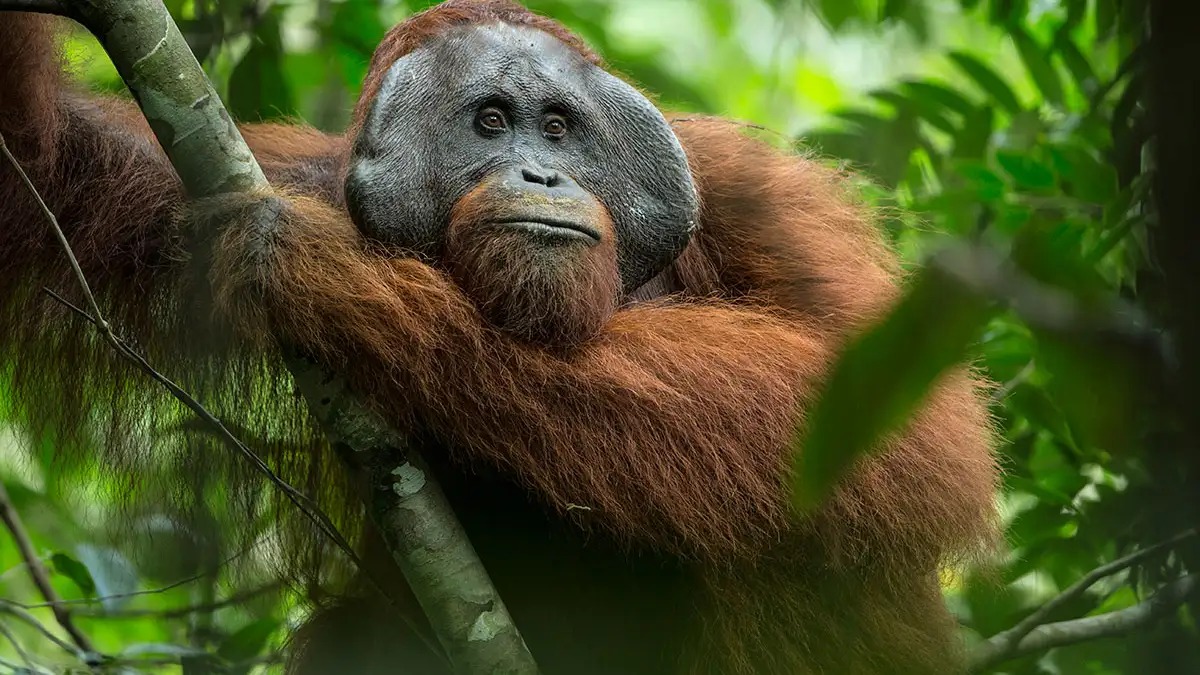Orangutans are a species of great apes found in the rainforests of Borneo and Sumatra. They are the largest arboreal (tree-dwelling) animals in the world and are known for their distinctive reddish-brown hair, long arms, and keen intelligence.
Table of Contents
I want to celebrate this special day with an image full of tenderness: an 🦧 Orangutan mother with her children. Orangutans are primarily solitary animals and spend most of their time in trees, where they build nests to sleep in at night.
They are omnivorous, with a diet that consists mostly of fruit, but also includes leaves, bark, insects, and occasionally small animals. Orangutans are considered endangered, with habitat loss and hunting being the primary threats to their survival. Conservation efforts are underway to protect their remaining habitats and ensure their continued existence.
Orangutan mothers are the most caring in the animal kingdom.
Orangutans are the species that follows its babies along the learning curve for more years than other mammals. Newborn orangutans remain in close contact with their mother for the first two years of their lives, he or she completely dependent on their mother for food and transportation.
An orangutan baby clings to its mother's stomach, side or back as it moves through the trees and feeds on its mother's breast milk. Orangutan offspring are sometimes carried on their lap up to the age of 5 and breastfed until age 8! Even when young Orangutans are too large for their mother to carry and feed, they may still stay close to her, traveling with her, eating and resting in the same trees, until about the age of 10.

Most Orangutans in the wild live up to 30-40 years but some have been recorded to reach the age of 60 years or more. The animal also significantly differs in sizes between males and females. Male Orangutans can often weigh more than 90 kg whereas females are a third or half their sizes.
Orangutans are a unique species for several reasons.
Here are some notable characteristics that set them apart:
- Tool Use
Orangutans are one of the few non-human species that use tools in the wild. They have been observed using sticks to extract insects from tree bark and leaves to fashion umbrellas to shield themselves from rain. - Intelligence
Orangutans are among the most intelligent animals on the planet. They have been observed using problem-solving skills and exhibit complex social behaviors. - Physical Adaptations
Orangutans have a number of physical adaptations that allow them to thrive in their forest habitat. Their long, powerful arms and flexible shoulder joints enable them to swing through the trees with ease, while their grasping hands and feet allow them to grip onto branches and vines. - Slow Reproduction
Orangutans have one of the slowest reproductive rates of any mammal, with females giving birth to just one offspring every six to eight years. This makes them particularly vulnerable to habitat loss and hunting. - Endangered Status
Due to habitat loss and other human activities, orangutans are currently listed as critically endangered. Conservation efforts are underway to protect their remaining habitats and ensure their continued existence. - They care much
Did you know that female adolescent orangutans stay with their mothers longer than males. If the mother has another child, the adolescent often helps the mother care for the child by learning about mothering behaviors.
Scientific facts about Orangutans.
- Taxonomy
Orangutans are classified in the family Hominidae, along with humans, chimpanzees, gorillas, and bonobos. They are in the subfamily Ponginae and the genus Pongo. - Physical Characteristics
Orangutans are the largest arboreal animals in the world, with adult males weighing up to 200 pounds (90 kg) and standing up to 5 feet (1.5 meters) tall. They have distinctive reddish-brown hair, long arms, and a large, broad face with prominent cheek pads. - Diet
Orangutans are primarily frugivorous, meaning they primarily eat fruit. However, they also consume leaves, bark, insects, and occasionally small animals. - DNA
The DNA of orangutans is more than 97% identical to that of humans, making them one of our closest living relatives. - Conservation Status
Both species of orangutans - the Bornean and Sumatran - are currently classified as critically endangered by the International Union for Conservation of Nature (IUCN). The primary threats to their survival are habitat loss due to deforestation, illegal hunting, and the pet trade. - Reproduction
Female orangutans give birth to a single offspring after a gestation period of approximately 245 days. Offspring stay with their mothers for several years, learning essential survival skills before becoming independent.
Here are some statistics on their population and conservation status
Bornean, Sumatran and Tapanuli are all species of orangutans. Easily identifiable by their reddish, ginger-tinted fur, the three orangutans species have many similarities including the presence of beards and moustaches in adult males – and for some adult females. However, Bornean orangutans tend to have darker and redder coats and rounder faces.

The two species of Orangutans - Bornean and Sumatran - are both considered critically endangered by the International Union for Conservation of Nature (IUCN).
- Bornean orangutan
There are an estimated 55,000 Bornean Orangutans left in the wild, which represents a decline of more than 50% in the past 60 years. They are found primarily in Indonesia and Malaysia. - Sumatran orangutan
There are an estimated 7,500 Sumatran Orangutans left in the wild, which represents a decline of more than 80% in the past 75 years. They are found only on the island of Sumatra in Indonesia. - Habitat loss
The primary threat to Orangutan populations is habitat loss due to deforestation for palm oil plantations, logging, and other human activities. It is estimated that over 80% of Borneo's forests have been destroyed or degraded in the past few decades, and Sumatra has also experienced significant deforestation. - Conservation efforts
There are a number of Organizations and initiatives working to protect Orangutan populations and their habitats. These include habitat restoration projects, anti-poaching patrols, and education and awareness campaigns to reduce demand for products that contribute to deforestation.
These statistics underscore the urgent need for continued conservation efforts to protect these critically endangered species and their habitats.


